When you arrive to Israel the first impression from the plane’s window is a melange of brown pink with ochre surrounded by a turquoise sea. Israel is part of the Middle East that consist of four regions, that is the Mediterranean Coastal Plain, the Central Hills, the Jordan Rift Valley and the Negev Desert. The Coastial Plain, that extends from the border with Lebanon until Gaza, is a fertile region full of citrus orchards and vineyards. This area is crossed by different streams and it includes the Western Galilee, Hof HaCarmel, the Sharon plain and the Southern Coastal Plain.
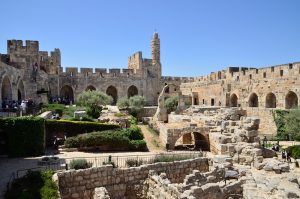
In the Central Hills there are mountains and hills belonging to the Upper Galilee and Lower Galilee, that reach a maximum height at Mount Meron with its 1208 meters. Among the valleys of this region the largest one is the Jezreel Valley with 48 kilometers of extension. The Jordan Rift Valley comprehends the Jordan River, that is the largest river of Israel flowing into the Lake Tiberias and ending up in the Dead Sea, and the Sea of Galilee. The Dead Sea is 304 meters deep, the deepest hypersaline lake in the world. The Negev Desert with a surface of 12000 square kilometers is an extension of the Sinai Desert, and it is featured by makhteshim cirques like Makhtesh Ramon, Maktesh Gadol and Makhtesh Katan.
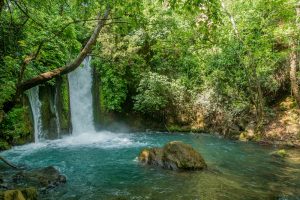
The longest river of Israel is the River Jordan with its 320 km of extension, rising in the southern area of Mount Hermon, it flows into the Sea of Galilee and into the Dead Sea. The Kinneret, that is the Sea of Galilee, is the largest freshwater lake of Israel, located in the northeast it has an area of 166 square km and a depths of 46 m. The saltwater Dead Sea is located on the South part of the Kinneret, with its 418 m below sea level, it is the lowest water surface on Earth.
largest cities of Israel
Israel has three metropolitan areas, Gush Dan- Tel Aviv, Haifa and Beersheba, with a total of 74 cities and different populations such as Jews, Arab Muslims, Arab Christians and Druze. The 14 cities with more then 100,000 inhabitants are Jerusalem and Tel Aviv, followed by Haifa, Rishon LeZion and Petah Tikva.
Tel Aviv
Tel Aviv on the Mediterranean coastline, is the financial, technology and high-tech center of Israel, as well as the largest city in the Gush Dan region of Israel. Tel Aviv is an international city and the third-largest financial city in the Middle East after Abu Dhabi and Kuwait City. It is named “The White City” or “The City that Never Sleeps” because of its intense nightlife. With a name that literally means “Spring Mound”, the Old City of Jaffa was built during the Ottoman Empire and represented one of the oldest ports in the world, after the most part of the Jews left Jaffa to move to the new neighborhood Neve Tzedek and the city of Tel Aviv, which was founded in 1909.
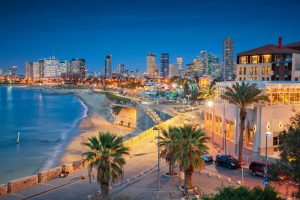
Jerusalem
Jerusalem besides to be the capital of Israel, it is one of the oldest cities in the world and it is considered the holy city in Judaism, Christianity and Islam. During the Canaanite period, Jerusalem had the name “Urusalima”, that is “City of Peace”. The Old City is the oldest part of Jerusalem called City of David in the 4th millennium BCE and afterwards in 1538 at the time of Suleiman the Magnificent the walls were built around Jerusalem. In the Old City there are four different quarters, that is Armenian, Christian, Jewish and Muslim Quarters, and there there are many important religious sites such as the Temple Mount, the Western Wall, the Church of the Holy Sepulchre, the Dome of the Rock, the Garden Tomb and the al-Aqsa Mosque.
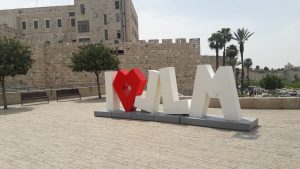
Haifa
The third-largest city in Israel is Haifa built on the northern sides of Mount Carmel and around Haifa Bay 3000 years ago, it has been a crossroads of different cultures such as Phoenicians, Persians, Hasmoneans, Romans, Byzantines, Arabs, Crusaders, Ottomans, British, and the Israelis. Known as a city of industry, Haifa is a cultural center as well with its theaters and museums like the Israel National Museum of Science, Technology, and Space.
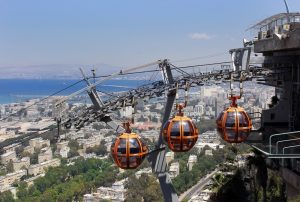
Rishon LeZion
The fourth largest city in Israel is Rishon LeZion, that is part of the Gush Dan area and has been founded in 1882 by some immigrants from Ukraine. Special places to visit are the Carmel Winery, the Great Synagogue and the Well.
Petah Tikva
The fifth largest city of Israel is Petah Tikva in the Central District of Israel, founded in 1878 by European religious immigrants, it is the second largest industrial city of Israel after Haifa due to the presence of many high-tech industries. Among the places to visit in Petah Tikva there are the Museum of Man and Nature and the Petah Tikva Museum of Art.

